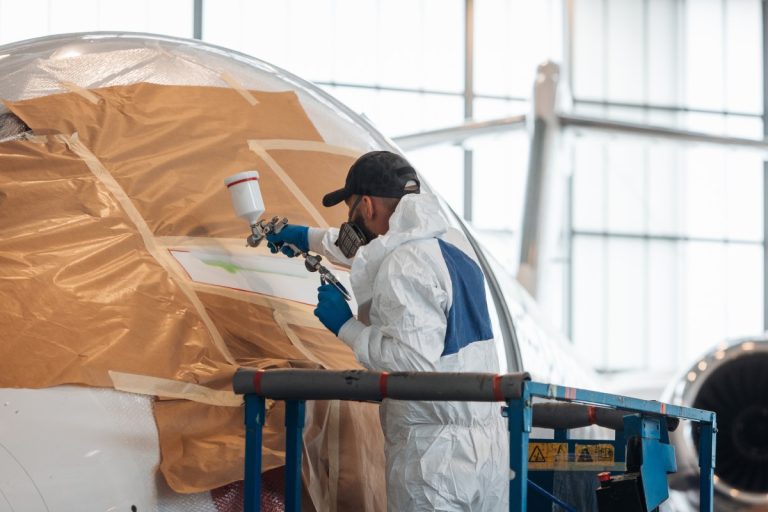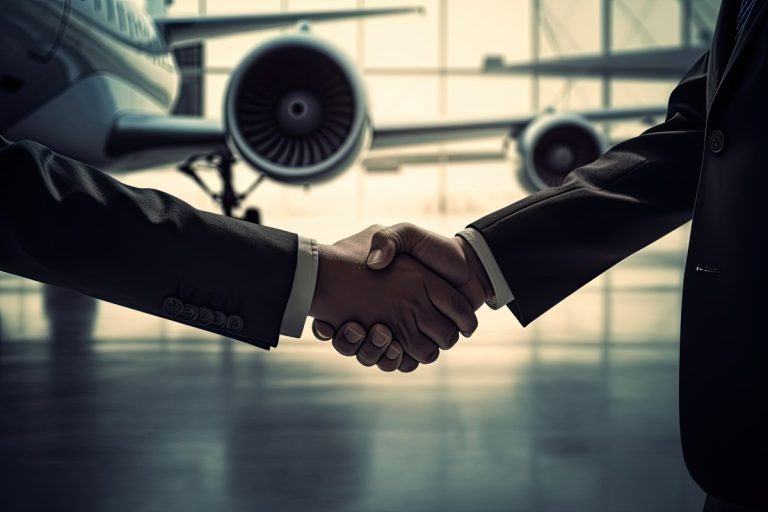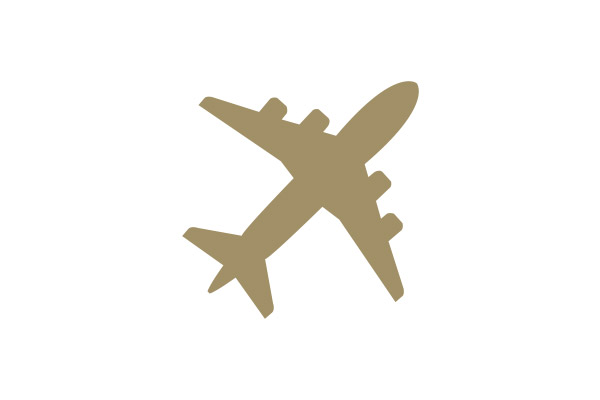While the effects of the coronavirus pandemic are still being felt around the world, airlines must effectively manage their assets, operations and cash flow to ensure sustainability and ultimately, long term business success. Preparing for travel in a post-coronavirus world must happen now – and we’re here to help airlines make the most of the current situation.
Key considerations are right-sizing fleets, revisiting and realigning business models, and ensuring airlines have adequate access to capital to carry the business through the pandemic.
In the final of this three part series, we’ll cover access to capital, during and after COVID-19.
ACCESS TO CAPITAL
Airlines around the world are experiencing unprecedented levels of liquidity pressure as a result of the COVID-19 pandemic. Most airlines – even those who’ve traditionally maintained adequate cash reserves – are under immense pressure to bridge the cash flow gap created by the abrupt collapse of passenger demand and ticket revenue.
Even in good times, airlines operate on razor-thin margins; the airline industry generated an overall net profit margin of 4.6% in 2017 (3.4% in 2018), and even this was arguably one of the industry’s most successful years. Thin margins paired with large fixed costs give airlines very little room to manoeuvre when the market changes direction.
As a result, airlines have been scrambling to raise additional capital to ensure longevity through the COVID-19 pandemic.
In 2020, the airline industry is poised to record a loss of USD 84.3 billion, with a net profit margin of -20.1%. This translates to a net loss of USD 230 million per day, on average.
Major airlines like LATAM, Avianca, and Virgin Australia have unfortunately capitulated under the pressures of the ongoing pandemic, and have filed for bankruptcy protection.
Traditional credit-based financing sources have all but dried up for those who need it the most, due to the rapid deterioration of financial performance, financial position and credit quality. Airlines have had to look to their assets, both tangible and intangible, to pledge as security in raising additional debt capital. In the absence of assets, some have been leaning on their government for support – typically state guarantees, direct lending, equity injections or subsidy programs.
Airlines have tapped a range of financing avenues – some of which are quite novel – since the turn of the second quarter of this year. The most prominent sources of capital have been sale and leaseback transactions, direct government funding and guaranteed loans, and secured debt backed by assets such as loyalty programs and qualified institutional placements (QIP, common in South Asian countries). This has helped airlines to shore up their respective cash reserves and deter the need to file for bankruptcy protection.
SALE AND LEASEBACK
Sale and leaseback (SLB) transactions are an effective way for airlines to unlock capital tied into the ownership of aircraft. SLB can also release the capital tied into undelivered aircraft orders.
In a SLB transaction, an airline sells the asset or the right to purchase an asset to a leasing company. This most typically applies to a whole aircraft or engines, but may also include spares, tooling or other tangible assets. At the time of closing the sale transaction, the airline receives the sale price of the asset and simultaneously enters into a lease agreement to lease back the same asset from the lessor. This practice allows airlines to unlock cash while still being able to use the asset in its operations.
Given the economic impact that airlines have been subjected to in the current environment, SLB transactions have gained traction – and some transactions have been particularly noteworthy during the pandemic.
In April 2020, Delta Airlines entered into a sale and leaseback transaction that to release USD 1 billion in cash. The airline entered two separate SLB agreements with BBAM Aircraft Leasing & Management and Altavair AirFinance, raising USD 750 million and USD 250 million respectively.
easyJet reported that it unlocked USD 266 million in cash through an agreement with Bocomm Leasing in August 2020. In total, easyJet has so far raised USD 804 million through SLB transactions, mainly through its fleet of A320 family aircraft.
Cathay Pacific raised approximately USD 704 million in a sale and leaseback transaction with BOC Aviation, involving six Boeing 777-300ER aircraft, at the onset of the pandemic.
When considering a sale and leaseback transaction, airlines need to consider the likely selling price or current market value of the assets against any underlying debt obligations, as this determines the equity, or actual cash, that can be unlocked.
Given the drop in aircraft and engine values, airlines need to assess the amount of equity remaining in their assets and whether this warrants pursing a SLB transaction as opposed to other financing alternatives. Outside of the quantity of cash that can be unlocked, airlines need to be conscious of key leasing parameters such as maintenance reserves or redelivery compensation, lessor maintenance contributions, as well as aircraft redelivery conditions.
GOVERNMENT SUPPORT
Airlines directly and indirectly support more than 65 million jobs globally, with significant spillover effect into local economies. The presence of airlines and air transportation links, whether government or privately owned, are key pieces of national infrastructure.
In the wake of COVID-19, traditional funding sources have been unable to cover the immediate capital requirements of airlines – and so governments around the globe have stepped in, to preserve core transportation links and limit unemployment.
Government support has been largely delivered through direct lending or investment (both debt and equity), relief packages and the issuance of credit guarantees, against which airlines are able to tap into capital markets.
Larger economies and governments have constructed economy-wide relief packages, such as the CARES Act in the US and the WSF in Germany, whereas smaller economies are supporting national airlines on a case-by-case basis.
In the United States, the CARES Act aims to help alleviate some of the economic distress across the country. Part of the act includes support for the aviation industry, amounting to a total of USD 64 billion in government grants for airports, payroll support and direct government loans or credit guarantees. Several US airlines have accepted the relief provided by the US government, including American Airlines and United Airlines:
- American Airlines has been approved to receive USD 5.8 billion in government aid under the Payroll Support Program (PSP) provision, as part of the CARES Act. American Airlines will receive USD 4.1 billion as a direct grant and the remainder (USD 1.7 billion) will be disbursed to the airline as a low-interest rate loan
- United Airlines will receive a relief package totalling USD 5 billion under the PSP. The federal government will provide USD 3.5 billion as a direct grant, and the remaining USD 1.5 billion will be structured as a low-interest rate loan
The United Kingdom has created an emergency lending scheme; the Covid Corporate Financing Facility (CCFF). The scheme aims to support large non-financial companies that have been affected by the ongoing pandemic. The CCFF is mandated to provide governmental support in the shape of short-term and low-interest rate loans. Under the CCFF, the Bank of England purchases the commercial papers (CPs) of companies that meet the eligibility requirements of the scheme, facilitated by intermediary banks. To date, multiple airlines have made use of the CCFF.
- easyJet has received funds under the CCFF amounting to a total of GBP 600 million
- Irish low-cost carrier Ryanair has also received funds amounting to a total of GBP 600 million from the government
- British Airways has received funds totalling GBP 300 million under this scheme
- Wizz Air, the British subsidiary of the Hungarian low-cost carrier, has received a relief loan of GBP 300 million
Many other notable airlines have so far received financial support from their respective governments.
- Cathay Pacific is expected to receive USD 5 billion from the Hong Kong government through a recapitalisation drive and a relief bridging loan. The government will inject approximately USD 3.5 billion in equity and will take a 6.08% stake in the airline
- Singapore Airlines became one of the largest airline beneficiaries of governmental relief packages in late March, when it announced securing funds amounting to USD 15 billion through various state-driven avenues. As part of the relief package, the government agreed to underwrite shares and convertible bonds of the airline in addition to providing a bridging loan worth USD 4 billion
- Air France-KLM has received support from both the French government and the Dutch government, owing to the complexity of how the airline group is structured. The French government has agreed to provide Air France with state-backed loans worth EUR 7 billion, and the Dutch government has agreed to provide KLM with direct loans and state guarantees worth EUR 3.4 billion
- The TUI Group agreed an additional EUR 2 billion stabilisation package with the WSF (Germany’s Economic Stabilisation Fund), comprised of a EUR 1.05 billion top-up to the existing EUR 1.8 billion KfW credit line, and the issuance of a EUR 150 million Convertible Bond
The majority of airline failures take place in the months immediately following the European summer season. Given the absence of a summer season this year, airlines will undoubtedly be under sustained financial duress going into winter 2020/2021. Further government financial support packages are going to be needed on a global scale to sustain airlines through to the summer 2021 season at a minimum.
It’s worthwhile to note that government relief packages will require airlines to develop a robust business and turnaround plan, positioning the airline for a sustainable growth trajectory in a post-pandemic economy. Consideration needs to be given to the terms of such government assistance programs.
Demand forecasting and financial modelling are required to estimate an airline’s capital requirements, and to determine the optimal capital structure and repayment profile to match the projected financial recovery.
RAISING SECURED DEBT
As traditional sources of credit-based lending are reluctant to provide unsecured debt, airlines have had to look internally at available tangible and intangible assets to raise capital – such as aircraft, engines, slots and frequent flyer programs.
Secured debt transactions in the airline industry have exploded during COVID-19, especially in larger airlines that can leverage their fleet of owned aircraft to unlock a healthy amount of capital. Alaska Airlines raised nearly USD 1.2 billion in secured debt by collateralising 61 of its 300-strong fleet of aircraft through a private funding facilitation. British Airways also raised approximately USD 750 million in secured loans through a credit facility managed by Citibank, and collateralised 48 of its Airbus and Boeing aircraft in the process.
United Airlines was the first major airline to raise secured funding using its frequent flyer program, MileagePlus, as collateral. The US giant raised USD 6.8 billion in secured financing in July, in the form of bonds worth USD 3.8 billion and a loan worth USD 3 billion respectively. has also shown interest, and is contemplating collateralising its own frequent flyer program to raise secured financing of up to USD 5 billion.
American Airlines and JetBlue have turned to alternative assets to raise additional capital. American Airlines raised USD 1.2 billion in secured funds by pledging its brand name and slots in US airports. JetBlue also improved its liquidity position by raising USD 750 million under a secured term loan, which was backed by the airline’s slots at major airports in New York and Washington, in addition to collateralisation of the JetBlue brand.
When raising capital against their assets, airlines need to assess the value of their collateral, as well as an appropriate repayment profile that matches the residual value forecast of the assets.
GET THE HELP YOU NEED DURING COVID-19
At ACC Aviation, we fully recognise the cash flow and liquidity difficulties that airlines are facing globally.
We’re here to support operators that are looking to raise additional capital, either through sale and leaseback arrangements, positioning themselves for tapping into government-backed relief packages or exploring external avenues for secured financing.
There are a variety of avenues through which capital can be raised, each with its own advantages and disadvantages. We can help airlines understand the various options available to them and support them in identifying sources of capital. We’ll run valuations of aircraft, slots and other assets as potential collateral, helping airlines manage the capital raising process with our expert advice.
Our strategic consulting and asset management services are aimed at enabling airlines to withstand the challenges brought on by the current pandemic by capitalising on their core strengths: transforming them into entities that remain sustainable and add stakeholder value.
For more information about our complete range of services or to enquire about your airline’s specific requirements, get in touch or speak with a member of our team on +971 4 250 0373.





